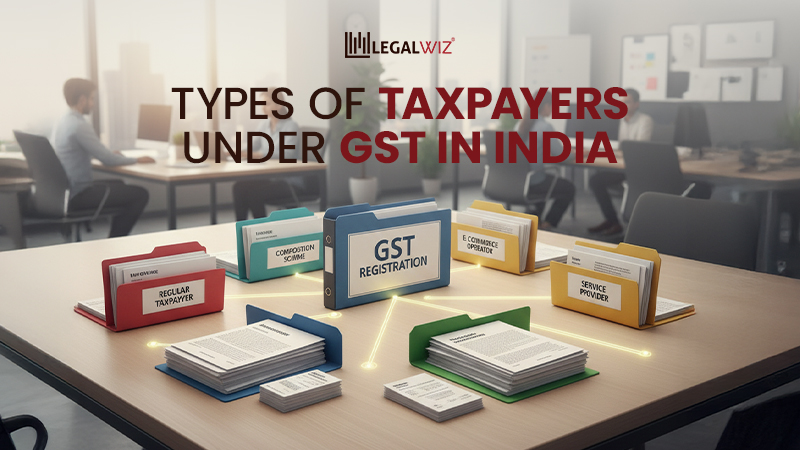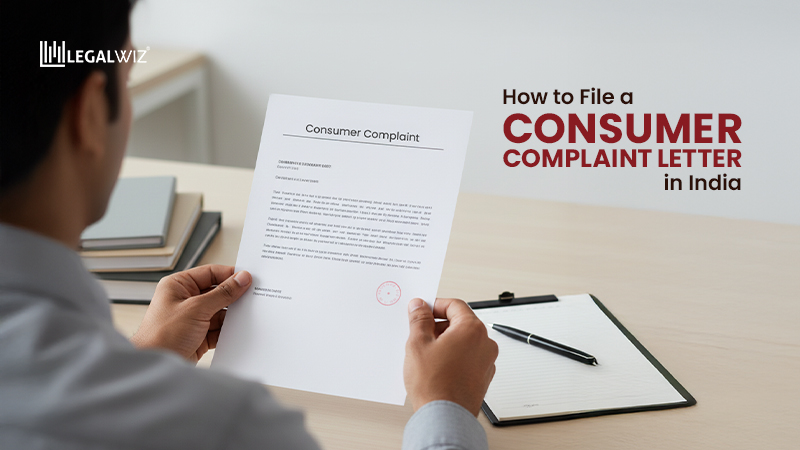GST Compliance Tips for Small Businesses in 2025
Why Small Businesses Dread GST (And How You Can Beat It)
If you’re a small business owner, just hearing the word GST can feel like someone turned up the heat in May. Late filings, confusing returns, mismatched invoices, and the ever-hanging danda of penalties are enough to turn even the most disciplined entrepreneur into a chai-fueled, midnight tax-filing zombie.
Now, you know the drill: eyes glued to Excel sheets, calculator in hand, second-guessing every entry, and praying to the audit gods that no small slip becomes a big problem.
But here’s the bright side: GST doesn’t have to play villain in your business story. With the right approach to GST registration, timely return filing, and a few smart habits, compliance in 2025 can be stress-free. In this blog, we’ll share practical, easy-to-follow tips designed especially for small businesses. By the end, you’ll know exactly what’s expected of you and have a clear, no-drama roadmap to handle GST with confidence.
GST in 2025 – The Big Shake-Up You Need to Know About
Before we dive into the tips, let’s hit pause and ask, what exactly is GST, and why has it become the buzziest word of 2025?
Think of it as India’s way of cleaning up the tax thali. Instead of juggling a dozen different levies, we now have one system, the Goods and Services Tax (GST), served in three tasty portions:
- CGST (Central GST): Picked up by the Centre when you sell within your state.
- SGST (State GST): Collected by your state government alongside CGST on the same sale.
- IGST (Integrated GST): Comes into play when your goods or services cross state borders.
Sounds good, no? But it has a flip side. Companies were coping with four slabs of tax at 5%, 12%, 18%, and 28% for years. The government rolled up the menu in 2025, eliminated 12% and 28%, and introduced us to a fresh trio of three: 5%, 18%, and a behemoth 40% slab (for sin and luxury items like tobacco, pan masala, and high-end cars).
On paper, it looks simpler. In reality? Not so much. Businesses are now recalculating prices, reprinting invoices, and double-checking every GST return filing to avoid costly slip-ups.
This is good and bad news for small businesses. Yes, less paperwork. But it also means coming up with new pricing plans, checking input tax credits, and paying close attention to deadlines. If you miss one filing, you’ll have to deal with penalties, cash flow problems, and some awkward conversations with customers.
That’s why, in 2025, compliance isn’t just about ticking boxes. It’s about protecting your business credibility and making sure the taxman doesn’t disturb your chai time.
So buckle up. In the next section, we’ll walk you through practical, smart tips to survive (and thrive) in the new GST world, without becoming a midnight calculator warrior.
Also read: How to Download GST Registration Certificate Online
Tip #1 – Pick the Right GST Scheme for Your Business
Choosing the right GST scheme can save you both money and unnecessary paperwork. With the 2025 changes in rates, reviewing your registration type has become even more crucial.
Here’s how the two main schemes compare and when you should opt for each.
| Feature | Regular Scheme | Composition Scheme |
| Who should choose it | Businesses with larger turnover or interstate sales | Small businesses with local sales and turnover below ₹1.5 crore |
| Filing frequency | Monthly returns and annual reconciliation | Quarterly returns with simplified process |
| Input tax credit | Allowed, helps reduce tax burden | Not allowed |
| Compliance effort | Higher – detailed invoices, tracking | Lower – fixed percentage of turnover |
| Tax rate | As per applicable GST slabs (5%, 18%, etc.) | Fixed percentage based on turnover |
| Best for | Businesses dealing with registered clients or credit claims | Local retailers, restaurants, and service providers with simple supply chains |
How to Decide Which One is Best for You
- Go for the regular scheme if:
– You sell to registered businesses and want to claim input credits
– You operate across states or deal with larger transactions
– Your turnover crosses the limit - Go for the composition scheme if:
– You mostly serve end customers locally
– You want to reduce paperwork and focus on operations
– Your turnover stays comfortably within the limit
Switching from the Regular GST Scheme to the Composition
If your business qualifies and you want to move to the composition scheme:
- File the request on the GST portal before the new financial year or within the allowed time frame.
- Submit turnover details and supporting documents.
- Once approved, you’ll start paying tax at the composition rate and follow quarterly filings.
Selecting the wrong scheme may lead to penalties, excess compliance expense, or missing opportunity credits. Regular annual review of your scheme, particularly after tax changes in 2025, keeps you up to date and saves you expensive blunders.
For a further, more detailed look at simplified compliance, you can also check out our guide on the GST composition scheme for small businesses.
Tip #2 – Stay On Top of GST Rates and Percentages
If you don’t use the proper GST percentage, you might be audited, penalized, or have customer troubles. It’s much more crucial to keep up with India’s GST rates and complete your taxes correctly now that things are changing in 2025. This is particularly true if you offer more than one product or service.
After 2025, you’ll have to use these common rates:
| Category | GST Rate |
| Essential items (e.g., food grains, medicines) | 5% |
| Standard goods (e.g., electronics, furniture) | 18% |
| Select categories with transitional benefits | 5% or 18%, depending on classification |
Note: The 12% and 28% slabs have been scraped and added to other slabs, so most goods now fall under either 5% or 18%. Always check the latest notifications if you’re unsure. You can download the PDF of the new GST rate.
How to Calculate GST Percentage Correctly
For starters, GST calculation is simple:
GST amount = Price × GST%
Net price = Cost of product + GST amount
But the trick lies in applying the right slab to the right product and making sure the final invoice is accurate. Incorrect calculation doesn’t just confuse your customer, it can also land your business in compliance trouble.
For a single product:
Suppose you sell furniture worth ₹50,000 at 18% GST:
- GST = 50,000 × 18 ÷ 100 = ₹9,000
- Total invoice = ₹50,000 + ₹9,000 = ₹59,000
For multiple products with different rates:
Example: You sell packaged food (5%) and electronics (18%) together.
- Packaged food ₹10,000 → GST = ₹10,000 × 5 ÷ 100 = ₹500
- Electronics ₹30,000 → GST = ₹30,000 × 18 ÷ 100 = ₹5,400
- Total invoice = ₹10,000 + ₹500 + ₹30,000 + ₹5,400 = ₹45,900
The takeaway: It’s not just about “doing the math.” Businesses must also use the correct HSN/SAC codes, keep invoices error-free, and make sure GST return filing matches the actual invoices. That’s where planning and compliance meet arithmetic.
Get to know more about the new GST: 56th GST Council Meeting: GST 2.0 Highlights, Outcomes & Updates
Best Practices
- Clearly mention the GST rate for each item on the invoice.
- Show the taxable amount and the tax amount separately—customers love transparency (and so do auditors).
- Double-check your HSN codes so you’re not caught applying the wrong rate.
- Keep an eye on rate updates—2025 has already shuffled plenty of categories.
Getting the GST percentage right from the start means fewer headaches later. It keeps audits at bay, builds trust with customers, and makes GST return filing much smoother.
With slabs now streamlined into just two main rates, there’s no better time to set up systems that guarantee accurate invoices and solid tax claims.
Up next, we’ll see how proper record-keeping can be your safety net against compliance slip-ups and costly penalties.
Tip #3 – Easy Record-Keeping for Stress-Free GST
Organizing your bills and invoices may not be fun, but it’s the best way to avoid errors and make filing your GST return easy. With the correct tools and a few basic practices, maintaining records can go from being a pain to becoming second nature, letting you concentrate on expanding your company.
Practical Tips
- Track expenses and sales in real time – Log transactions as they happen. Nothing worse than realizing you’ve missed entries when month-end chaos hits.
- Use digital invoicing tools – Let technology do the heavy lifting: calculate GST, generate invoices, and save your brain (and sanity) from meltdown moments.
- Organize documents by type – Give invoices, purchase bills, and receipts their own lanes. Suddenly, audits feel less like a horror movie and more like a well-directed scene.
- Set reminders for filing deadlines – Alerts are your friendly nudge before panic mode sets in. Monthly or quarterly returns won’t sneak up on you.
- Review records weekly – A quick weekly check catches small errors before they snowball into full-blown disasters. Stress? Consider it handled.
Also read: GST Compliance Checklist for Service-Based Businesses
Tools That Help You With GST
| Tool Type | How It Helps |
| Accounting Software (like Zoho Books, QuickBooks) | Automatically calculates GST, generates invoices, and sends reminders |
| Spreadsheet Templates | Easy for small businesses to track expenses and income |
| Cloud Storage (Google Drive, Dropbox) | Keeps your documents safe and accessible from anywhere |
| GST Portal Alerts | Keeps you informed of updates and deadlines |
Mini-Case: How One Retailer Simplified Compliance
Ravi, who owns a little electronics business, used to put in a lot of time each week creating invoices and keeping track of payments. After the GST amendments, mistakes happened more often, and submitting late began to hurt his cash flow.
He moved to an invoicing system that was located in the cloud and automatically applied the right GST rates in India. It also kept his data sorted by client and category.
Ravi now spends half as much time on compliance and files taxes without worry, thanks to weekly reminders and real-time monitoring. This gives him more time to build his company.
Tip #4 – Avoid Common Pitfalls While Filing GST
While running a business, we tend to take every burden on our shoulders, and that leads us to making avoidable blunders; that also means making issues with GST. These errors can lead to delays, penalties, and unnecessary stress. The good news? With a few simple checks, you can prevent them and stay on track.
Common Mistakes and How to Fix Them
| Common Mistake | What Can Go Wrong | How to Avoid It |
| Using the wrong HSN code | Incorrect tax calculations or audits | ✓ Double-check the official HSN list before filing. ✓ Use accounting software that suggests codes based on product descriptions. |
| Mismatched invoices | Returns get rejected or flagged | ✓ Cross-check invoices with purchase orders before submitting. ✓ Standardize invoice formats across departments. |
| Delayed filings | Penalties and interest charges are hurting cash flow | ✓ Set automated reminders ahead of deadlines. ✓ Block specific days each month for reconciliation and filing. |
| Forgetting to claim input tax credit | Losing out on eligible tax deductions | ✓ Maintain a separate folder for purchase invoices. ✓ Reconcile credit claims weekly with the GST portal. |
To explore this further, take a look at our detailed blog on common mistakes in GST filings for SMEs.
Bonus Tip – Keep Up With 2025 GST Changes
With the major updates in 2025, like the merging of tax slabs and new filing rules, it’s easy to miss important changes. Falling behind can lead to mistakes, penalties, and lost input tax credits. But staying informed doesn’t have to be a full-time job. Here’s how you can keep up without wasting time.
What’s New in 2025?
| Change | What It Means for You |
| Merged Tax Slabs | The 12% and 28% rates are now part of 5% and 18%, requiring updated pricing and tax calculations. |
| Updated Filing Formats | New forms and schedules demand clearer documentation and timely submissions. |
| Compliance Tweaks | Rules around invoicing, input credits, and reporting have been refined; missing these can lead to errors. |
How to Stay Updated With GST Without Spending Hours
| What to Do | How It Helps You |
| Subscribe to official notifications | Get verified updates directly from the GST portal without searching endlessly. |
| Follow trusted accounting blogs or newsletters | Receive curated advice in simple language, saving time on research. |
| Use accounting software with auto-updates | Rates and compliance rules are updated automatically, reducing manual errors. |
| Join professional forums or groups | Learn from others’ experiences and share tips to avoid common mistakes. |
| Set a monthly review day | Stay proactive by dedicating time each month to reconciling accounts and checking compliance. |
Tracking GST changes doesn’t have to be overwhelming. With structured routines and the right tools, you can stay informed, avoid penalties, and confidently manage compliance in 2025, all without the headache.
Get Expert Help Without the Headache
GST compliance need not ruin your day or tea breaks. With the appropriate help, you can stop worrying about tax deadlines and focus on developing your company and satisfying consumers.
Expertise and clever tools assist here. Imagine handing over hard lifting to someone who likes it. With the correct direction, you can keep up with rule changes, complete GST returns on time, and avoid expensive errors without becoming bogged down in paperwork. More than paying for a service, it’s purchasing piece of mind.
LegalWiz makes GST compliance so easy you’ll wonder why you bothered. How we do it:
- Hassle-free filings – Stay updated and file on time, without chasing rulebooks.
- Smart tools & automation – Let tech handle the math and paperwork while you focus on your business.
- Expert support – Real humans (not chatbots) to answer your questions and ensure error-free filings.
- More time for growth – Because compliance should never eat into your ambition.
So why wrestle with GST when you can hand it off? Let LegalWiz take the stress out of compliance and turn it into just another easy win for your business.
Conclusion – Compliance Made Simple for Small Businesses
GST compliance doesn’t have to be complicated or overwhelming. With the right approach, clear records, accurate GST return filing, and timely updates, you can stay on top of your taxes without losing sleep or valuable hours.
Small steps, like using the correct GST rates in India, choosing the right scheme, and keeping your invoices organized, go a long way in preventing errors and penalties. It’s not about perfection; it’s about building habits that keep your business running smoothly.
By staying informed, using smart tools, and asking for help when needed, you can turn compliance from a burden into a routine part of your operations. With these tips and support from experts like LegalWiz, you’re fully equipped to handle GST return filing and compliance with confidence, and focus on what you do best: growing your business.
Stay prepared, stay compliant, and let small, consistent actions make all the difference.
Frequently Asked Questions
Can I switch from composition to regular later?
Yes! You can opt for the regular scheme if your turnover increases or you want to claim input tax credit. Just apply through the GST portal within the allowed timeline.
How often should I file GST returns?
It depends on your scheme. Regular filers submit monthly returns, while composition scheme businesses file quarterly returns.
What happens if I miss a GST filing deadline?
You may face penalties and interest on late payments. Filing after the deadline is possible but could impact cash flow and invite scrutiny.
How do I know which GST rate applies to my products or services?
Check the official rate list or use accounting software that suggests rates based on product descriptions and HSN codes.
Can I claim input tax credit on all purchases?
Not always. Only eligible purchases used for business purposes qualify, and proper invoices must be maintained.
Do I need a separate GST registration for each state I operate in?
Yes, if you have business operations in multiple states, you’ll need separate GST registrations for each.
Is it necessary to hire an accountant to stay compliant?
Not always. With the right tools and guidance, many small businesses handle compliance themselves. But expert advice helps avoid mistakes and saves time.
How can I stay updated with changes in GST rates and compliance rules?
Subscribe to official notifications, use automated accounting tools, and review updates monthly to ensure you’re always in line with the latest rules.

Sapna Mane
Sapna Mane is a skilled content writer at LegalWiz.in with years of cross-industry experience and a flair for turning legal, tax, and compliance chaos into clear, scroll-stopping content. She makes sense of India’s ever-changing rules—so you don’t have to Google everything twice.







